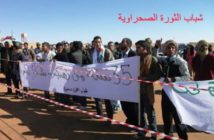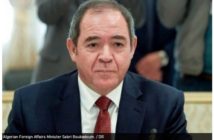By: Ria Novosti
By Alexey Eremenko
Refugees at the camp in Sevare, a dusty town in central Mali, told RIA Novosti late last month that God is French.
Such exaltation has been rippling through much of the country, which managed to fight off an Islamist-tinged insurgency thanks to last month’s blitzkrieg intervention by the French Air Force. Red, white and blue French tricolors have been displayed all over Mali – for the first time, locals say, since the West African former colony gained independence in 1960.
The French may have stopped the rebels’ advance toward the capital, Bamako, but the year-old uprising is far from extinguished: Pro-government troops are still skirmishing with insurgents and Malian army officers worry that rebels have simply retreated to the Sahara or blended in with the local populace, and could launch a powerful new offensive as soon as French troops pull out.

Mali
The insurgency has been a motley mix of Islamists – including many non-Malians – and secular separatists from the desert Tuareg people. But they have conflicting agendas and have splintered since the unrecognized proclamation of an independent state in the Azawad region of northern Mali in April 2012.
The government and the moderate separatists have indicated a willingness to negotiate with each other, but not with the Islamists. This radical wing of the insurgency will pose some of the thorniest problems for Mali, but it is hardly the only obstacle to peace in the region: In addition to Tuareg separatism, domestic problems include an ineffective and corrupt government, a drug-trafficking boom in the Sahara and the recent return of fighters who served slain Libyan leader Muammar Gaddafi – an armed influx that, most experts say, galvanized the current uprising.
Moreover, a challenging reconciliation effort may soon be needed, as the uprising has driven a deep wedge between the Tuareg and other Malians, who have grown distrustful of their northern neighbors.
“I will get back home,” Safetu Maiga, a refugee from the rebel-held town of Gao, said in the camp in Sevare. “But I will never be friends with my Tuareg neighbors there anymore.”
The Dream Of Azawad Hijacked?
The Tuareg, a Berber people of northern Africa, have been the main inhabitants of the Western Sahara for at least 1,500 years, surviving on goat and camel herding, trans-Saharan trade and rents from lower-caste farmers in the oases and semi-arid Sahel region to the south of the great desert.
Their population of 1.2 million is spread across five African countries, including about 500,000 in Mali, according to national lawmaker Assarid Ag Imbarcawane, an ethnic Tuareg. But except for a tiny sultanate in the Aïr Mountains of northern Niger, the Tuareg have never had their own state.
Since 1960, Mali’s Tuareg have staged four rebellions, including the latest. The previous ones, however, had not been explicitly separatist, calling only for an end to alleged discrimination by the government in Bamako.
Earlier uprisings had ended in greater representation for the Tuareg in government and the army, as well as more money for development, according to local political analyst Fily Mohamed Diallo. But grievances in the region continued to simmer.
The latest rebellion, which began in January 2012, mutated from a secular separatist movement into hard-core sharia-zation, with calls for political self-determination replaced in six months’ time by violently enforced bans on alcohol, cigarettes, Western music and other perceived vices.
How this happened isn’t entirely clear.
Initially led by the National Movement for the Liberation of Azawad (MNLA), a secular separatist group, the insurgency made strong headway in the first four months of 2012. By April, the rebels controlled all three regions in the country’s north, encompassing 60 percent of Mali’s territory, but less than one-tenth of its 14.5 million people. The national army suffered such heavy losses – estimated in media reports at around 160 dead and 400 captured soldiers – that the defeats precipitated a military coup d’état in March. The MNLA then proclaimed its independent Tuareg state of Azawad, though it failed to win international recognition.
Between spring and summer, however, the tide changed. In July, the MNLA was sidelined by its Islamist allies, most prominently the Ansar Dine group. While the numerical advantage seemed to be on the side of the MNLA – which fielded 2,500 to 5,000 fighters, according to estimates voiced last March on Al Jazeera by Jeremy Keenan, a prominent London-based expert on the region – the Islamist fighters, whose numbers did not exceed 1,000 according to most media reports, were well armed and well trained and seemed to rely on a core of highly motivated foreigners, either mercenaries or dedicated jihadists.
Ansar Dine began imposing sharia in the territories it controlled, introducing corporal punishment, mutilations and the death penalty for various crimes.
Last month, the Islamists set out for Bamako, steamrolling the Malian army units in their path.
This prompted France to deploy 3,500 of its own troops for Operation Serval, which drove the rebels back into the desert and recaptured their main strongholds, Gao, Kidal and Timbuktu.
Democracy Vs. Effectiveness
One reason Mali’s government could not maintain control of the rebellious north was that Bamako’s impressive track record on democracy coexisted with direly poor governance, said Moustapha Dicko, a senior functionary with the ADEMA-PASJ party, which holds 51 of 160 seats in the Malian legislature.
Defying stereotypes about African political leaders, ousted President Amadou Toumani Toure, in power since 2002, had eliminated political opponents by giving them jobs in government, not bunks in prison cells.
But the downside of this “consensus democracy” was an utter lack of consensus and, consequently, of meaningful policy, said Evgueni Korendyasov, Russia’s ambassador to Mali in 1997-2001 and now an Africa researcher with the Russian Academy of Sciences.
Worse still, many appointees had no administrative skills and busied themselves stuffing their pockets, not running the country, local experts said. Corruption also undermined efforts to alleviate poverty among the Tuareg, because much of the state’s investment in the region was simply siphoned off. Mali ranked 105th of 174 countries in the 2012 Corruption Perception Index by Transparency International.
“Our government is very weak, and our democracy very superficial,” said Dicko.
The military in particular suffered from inefficient management and poor funding. It became a last resort for the unemployed, many of whom enlisted despite being unfit for service or simply never intending to fight, Diallo, the political analyst, said.
Morale was low even among the core of military professionals, disgruntled at what they perceived as preferential treatment of Tuareg officers in accord with the earlier peace settlements, several Malian army officers told RIA Novosti on condition of anonymity.
Combat readiness suffered further from obsolete military equipment, most of it obtained from the Soviet Union. The Malian Air Force is still flying MiG-21 fighter jets, mass-produced since the late 1950s.
The rebellion proved the last straw: After Bamako largely failed to respond to the butchering of dozens of soldiers at the start of the uprising, disgruntled military men ousted President Toure. Reports said at the time that the men had never planned a coup and just wanted to vent their anger, but things snowballed. Toure fled to Senegal and power was grabbed by a military junta allegedly still running Mali from behind the scenes.
The Sahara’s Secret Life
As Bamako grew weaker in recent years, the Tuareg elites grew stronger. One important factor has been trans-Saharan trade, which has changed a lot since the time of the medieval Mali and Ghana empires that traded in gold and salt.
The modern Sahara thrives on smuggling, with goods such as consumer electronics flowing to Africa from Europe – the city of Gao in Mali’s north is advertised as the best place in the country to buy a satellite dish – and a steady trickle of would-be illegal migrants going the other way in hopes of securing passage to the European Union.
More importantly, the Sahara serves as a vital route for South African cocaine bound for Europe. An estimated 60 tons of drugs, mostly cocaine, pass through the desert every year, the United Nations Office on Drugs and Crime said in 2009.
In addition to drug lords, the desert region has started to attract Islamists, who seek to complete an “arc of instability” from the Sahara to Afghanistan, said Korendyasov, the ex-ambassador.
Osama bin Laden and a number of his associates were based in Sudan between 1991 and 1996, and several radical groups in Algeria, Libya, Sudan and Somalia have publicly admitted ties to al-Qaida since the early 1990s.
In Mali, the preaching of jihad came complete with monetary incentives: A new recruit to an Islamist group could count on a salary of about $900 a month, according to on-the-ground sources cited by Korendyasov. This in a country with annual per capita GDP of $1,100.
The jihadists were also reported to be providing money for community needs such as water wells, Korendyasov said, though he could not say how widespread the practice was.
Finally, an important factor that facilitated the uprising was the return of Tuareg mercenaries who had served Libyan leader Gaddafi.
Libya had business interests in Mali, and Gaddafi enlisted several thousand Tuareg, for whom service in the Libyan army was a career prospect that, until recently, had been unavailable to them in Mali.
After Gaddafi’s death during Libya’s own insurgency in 2011, between 800 and 4,000 Tuareg veterans, according to analyst Keenan’s figures, quietly returned to their homeland in Mali. They brought along their firearms, including anti-aircraft guns and other equipment unavailable to the Tuareg during past rebellions, when they sometimes had to resort to traditional takouba swords, in addition to Kalashnikovs.
Saying No To The Radicals
Despite the rebellion’s initial success, fears of Mali becoming an “Afghanistan-lite” appear exaggerated because the majority of its population opposes fundamentalism, experts and politicians agreed.
An estimated 85 percent of Malians adhere to Islam, but the laidback local version of the True Faith permits alcohol and music, largely avoids dress codes for both sexes, and has generally stayed away from sectarian conflicts.
“We’ve never paid attention to any divisions in Islam. As long as you pray to Allah, you are welcome here,” the head imam of Mopti, a city of 110,000 in central Mali, told RIA Novosti in an interview last month.
Conservative Islam is gaining a foothold in the country – a trend attributed to Qatar’s massive financial investment in building mosques and madrases and educating clerics, politician Dicko said.
“But most Malians are of moderate religious views, and the popularity of radical Islam is likely to wane due to the uprising,” he added.
Celeste Hicks, a former BBC journalist who lived in Africa, including Mali, from 2004 to 2010, believes that even “the original Tuareg call for full independence” is unlikely to garner widespread support in northern Mali.
“The Tuareg are only one of several ethnic groups in the north of Mali, which also include Songhai, Fulani, Bella and groups from southern Mali,” she wrote in emailed comments Wednesday. “While the Tuareg’s grievance with the Malian state goes right back to Mali’s independence in 1960, […] other ethnic groups in the north have in the past distanced themselves from the Tuareg position. Many may well also view the Tuaregs as having been partly responsible for the collapse of the Malian state in 2012.”
The Unreliable People
While the French intervention kept the rebels out of Bamako and other southern cities, the northern regions are still in danger because Mali’s army remains incapable of repelling them without foreign assistance, several army officers admitted to RIA Novosti, speaking on condition of anonymity due to the sensitivity of the topic.
This is a problem, given that France intends to pull out of Mali within weeks, according to French President Francois Hollande, who visited the country last weekend.
The current plan is to substitute the French force with a UN-sanctioned peacekeeping mission comprising 3,300 troops from the ECOWAS bloc, made up of 15 West African countries, which was originally set to deploy in September 2013.
Imbarcawane, the ethnic Tuareg lawmaker, believes the mission would suffice to pacify the region and prevent further Islamist uprisings in the Sahara.
But Diallo, the analyst, believes effectively controlling the Sahara by purely military means is unfeasible, a position shared by sources in the Malian army.
Most experts and politicians interviewed for this article agreed that the only viable solution was negotiations with the moderate Tuareg, who could be offered greater autonomy and more self-governance within Mali, though probably not independence.
The process is already beginning: The MNLA indicated its willingness to talk with Bamako late last year, and so did a group that splintered from Ansar-Dine in January. The proposal was supported last week by Mali’s acting president, Dioncounda Traore.
But no solution was proposed for the Islamists, who may now resort to terrorist tactics, several French and Malian military officials said in media comments.
Moreover, a political solution could be hampered by the growing resentment between the Tuareg and black Malians, many of whom see the separatists’ claim to independence and affiliation with radical Islam as an attack on national lifestyle or outright betrayal.
“This story showed the Tuareg are unreliable people,” said Bubakar Yalkuye, a resident of the town of Konna, where a pitched battle between the rebels and the French army took place in mid-January.
“I had Tuareg neighbors I grew up with, and they are alright in peaceful times,” he said.
“But now it’s clear you cannot trust them,” he summed up, standing among the rubble of the destroyed town hall, filled with burned-out APCs and remnants of gun-toting pickup trucks.
RIA Novosti is Russia’s leading news agency in terms of multimedia technologies, website audience reach and quoting by the Russian media.
.






